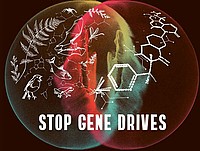Policy recommendations
To date, no internationally binding agreement specific to gene drives exists to regulate the research and release of gene drive organisms. Neither do specific national or supranational laws exist. Nevertheless, Target Malaria could conduct the first release trials with gene drive mosquitoes as early as 2024.
However, not only laws but even adequate, scientifically based concepts and methods for the estimation, assessment and management of risks as well as for the monitoring of released GDO into the environment are missing so far. Not even a central registry of all currently conducted research and development projects related to gene drives exists yet. There is also a lack of concepts and foundations for technology assessment that goes beyond pure environmental risk assessment.
A societal discussion about the circumstances under which the release of a GDO might be justifiable, even ethically required, or should be ruled out has not begun in earnest, neither at national nor at international level.
Against this background, it seems clear that, in the first instance, the world community must take sufficient time to deal with this new global challenge. This is the prerequisite for developing a common concept for dealing with gene drives, based at the United Nations, which regulates the basic ecological, medical, ethical, cultural, scientific and international legal issues involved here in a binding manner.
That's why Save Our Seeds recommends:
A global moratorium on the release of gene drive organisms
At the 15th Conference of the Parties to the UN Convention on Biological Diversity (CBD), the European Union should advocate for a globalmoratorium on any environmental release of GDOs. Even before that, it should make it clear that such releases are prohibited within the European Union under the current legal situation and that it will take action against any release that could currently or in the longer term reach the territory of the Union with all available means.
In the view of Save Our Seeds, the following requirements are essential prerequisites for reaching an agreement on lifting the global moratorium, which is to be considered on a case-by-case basis. Of course, it is in the nature of an open-ended agreement process involving all stakeholders that such criteria may change in the course of the discussion. Whether this moratorium should be converted into a permanent and general ban, or whether the release of gene drive organisms is justified or even required in justified individual cases, also depends on the criteria to be developed.
Retrievability and controllability of gene drive organisms
The prerequisite for any release of GDOs should be a sufficiently verified method for their removal from nature. In addition, a temporal and spatial controllability and thus a limitability of their effect and spread should be ensured.
A global process for decision-making on the release of gene drive organisms
Due to the international nature of the potential consequences of the release of GDOs, international standards and procedures for decision-making are also required for their approval. Crucial to this is the inclusion and equal participation of all potentially affected parties. This refers first to states, but also specifically to indigenous peoples and local communities as defined in UN Declaration 61/295 on the Rights of Indigenous Peoples and Declaration 73/165 on the Rights of Small Farmers and Other Rural Workers. The basis of such decisions must be, at a minimum, the principles of free prior informed consent.
An integrated system of assessment, evaluation and management of risks from gene drive organisms to the environment and health
The challenges of risk analysis and assessment cannot be met with existing concepts and methods of risk assessment of genetically modified organisms due to the lack of temporal as well as spatial limitations to the release of GDO. Before any release of GDO can be considered, internationally agreed procedures and guidelines must first be developed for how the environmental risks posed by GDO are to be uniformly recorded and assessed. Furthermore, monitoring and identification procedures would need to be established to document and track the spread and behavior of GDO in different ecosystems. In this context, the international community should commit to developing and maintaining contingency plans.
Concepts of international inclusive technology assessments for gene drive organisms
A comprehensive, anticipatory technology assessment involving all potentially affected states as well as indigenous peoples and local communities should go beyond the purely scientific investigation of ecological and health aspects. It should lay the foundation for discussing ethical questions, social, cultural and societal consequences, challenges and appropriate decision-making processes. This includes, among other things, the evaluation of the goals and the question of whether they can also be achieved by other means and what the costs and benefits are for which groups.
Binding and specific global rules for liability and redress for damage caused by gene drive organisms
Both during the validity of a global moratorium on the release of gene drive organisms into nature and in the event of a justified lifting of a moratorium, there should be specific and internationally binding rules for liability and redress. They should be able to address unintentional or illegal releases of gene drive organisms and resulting damage.
Global mandatory reporting of gene drive organism research in contained systems and uniform safety standards for gene drive research
Because even individual, unintentionally released GDOs could spread uncontrollably, both temporally and territorially, high safety standards for handling GDOs adapted to the respective organisms are of global importance and urgency, also in the laboratory. An essential prerequisite for adequate safety measures, but also for further discussion, is a central registry of all gene drive research and related field trials, which should include a precise description of the organisms, the gene drive constructs, and the goals pursued with them.
A ban on the development of gene drive organisms with potential for military use
In addition to the already existing ban on the use of biological weapons by the UN Biological Weapons Convention, a prerequisite for research on gene drives should be the proof that the GDOs developed in the process have no potential to be misused as weapons.



